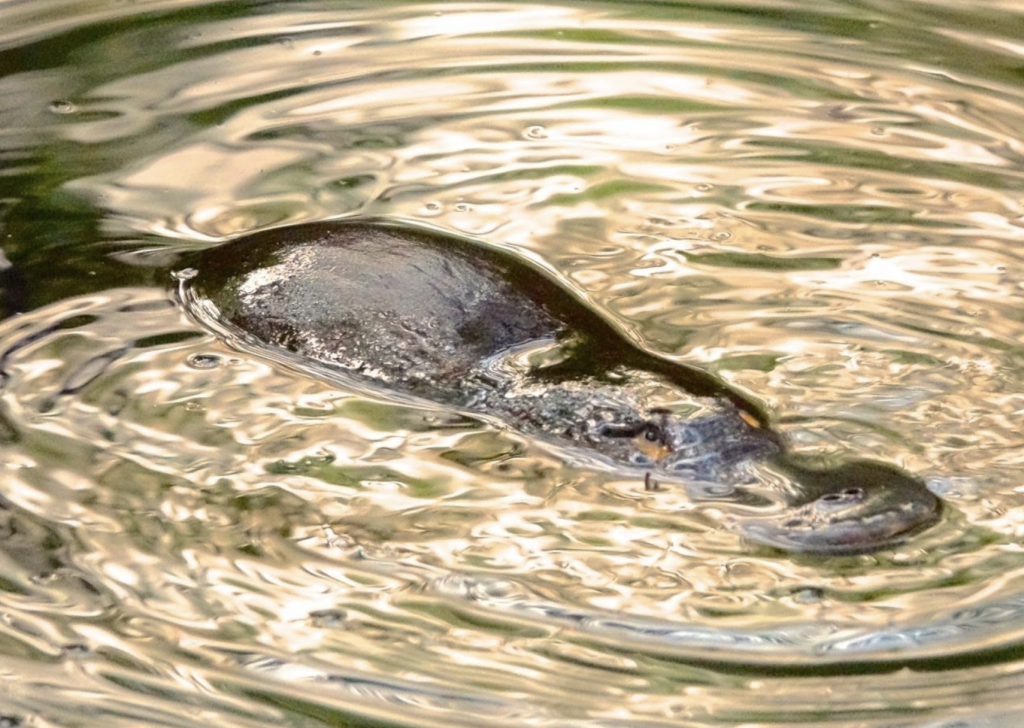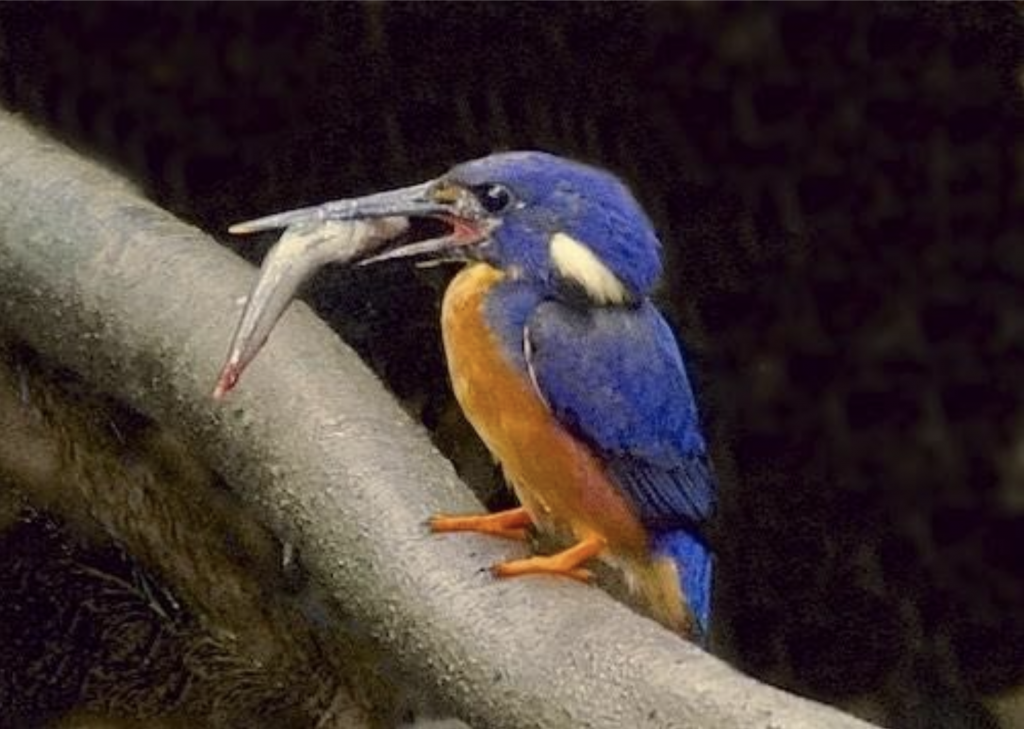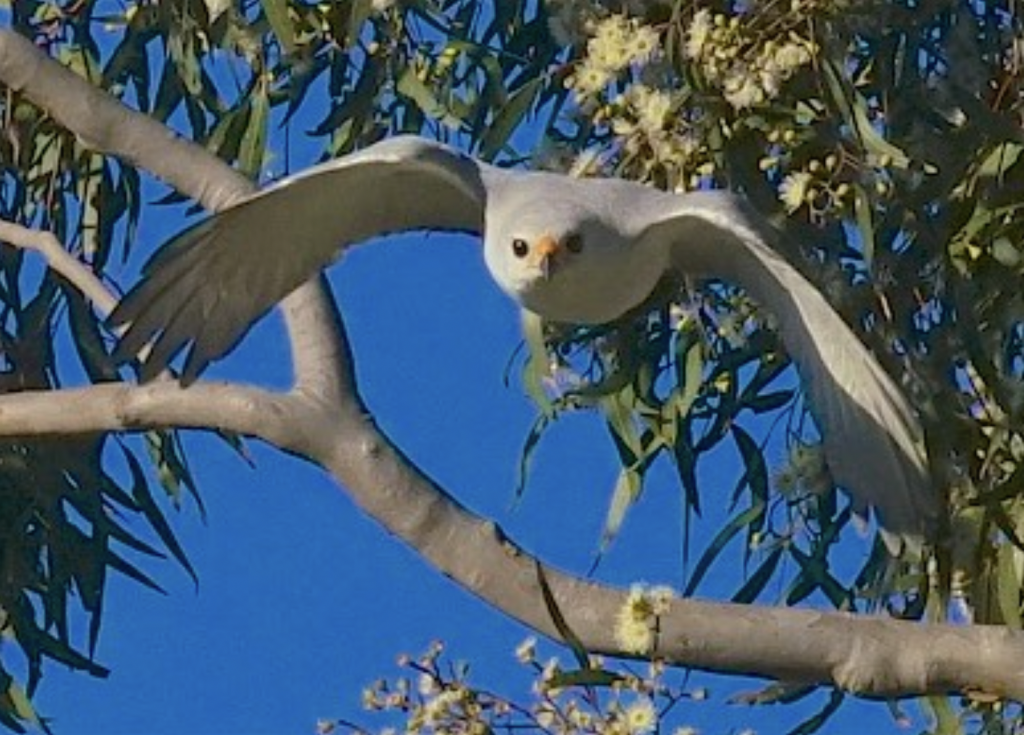It looks like a bumper year in Platypus activity in Gold and Moggill Creeks this year.
After several years of poor rainfall and little flushing out of the creeks, more consistent water flow has restored the aquatic habitat and the animals appear to be responding.
Platypus Photo: Ed Frazer
Ed Frazer has been monitoring part of Gold Creek that includes two large stretches about 400 metres long and 8 metres wide that were the local swimming holes in past years.
There have consistently been three breeding females in these ponds that have regularly been monitored in the annual Platypus Survey carried out each September. He suspects that they didn’t breed last year because of the poor condition of the creek.
“There has been a lot of activity up to mid-July with mating season starting” Ed said. “I regularly see the females feeding as late as 8am as they build up their condition for the egg laying and raising their two young. The good water conditions have resulted in a plenty of food, especially the Dragonfly larvae which I think is a major part of their food in our area.”
The females tend to move around the snags in the creek where there has been a considerable build-up of rotting down leaf matter where the insects feed. Luckily we haven’t had a strong flood in the creek that cleaned out this habitat as often has happened after a period of drought in the past. The females sighted had thick tails a sign of good condition for raising their young.
“The male Platypus behaviour is quite different at this time of year. I see them travelling through at impressive speed, sometimes on the surface, but often in shallow dives coming up for air every 45 seconds at a distance of about 30 metres. They are looking for mates at this time of year”.
By July 17 sightings suddenly ceased and Ed thinks that early egg laying had started and the females were in their dens incubating the eggs that take about 10 days to hatch.
In August the activity will slow down while the young are small and the females are using their reserves built up in the tails to supply food for the small puggles.
By September the young will be more demanding and the females will be out more in the early morning and before dusk to keep up their food. This is when the MCCG Platypus survey is held while the activity is at its height.
There is plenty of other activity in the creek to watch while waiting for the Platypus to put in an appearance. There are a number of Striated Pardalotes building their tunnels in the banks of the creek this year as the soil is nicely moist from the recent rains. They are lining their nesting chambers with feathers and trying to out-compete their neighbours with their distinctive three note call.
Azure Kingfisher Photo: Ed Frazer
The beautiful Azure Kingfishers are flying rapidly along the length of the pools stopping to perch on overhanging branches ready to strike on any fish near the surface. Their activity seems to be co-ordinated with the Platypus as they appear to be taking advantage of the fish disturbed by the strenuous stirring up of the fish on the bottom of the creek. They too will start building their nesting chambers in the banks of the creek and they should have a good chance of raising 4 young with the ideal conditions this year. There is also a beautiful Grey Goshawk that patrols along about 2km of the creek looking for prey just under the overhanging trees.
Grey Goshawk Photo: Ed Frazer
There are a lot of good photo opportunities around the local creeks and MCCG holds its annual Photography Competition in October each year, so a good turnout should be expected after two lean years of near drought.
Words and all photos by Ed Frazer




